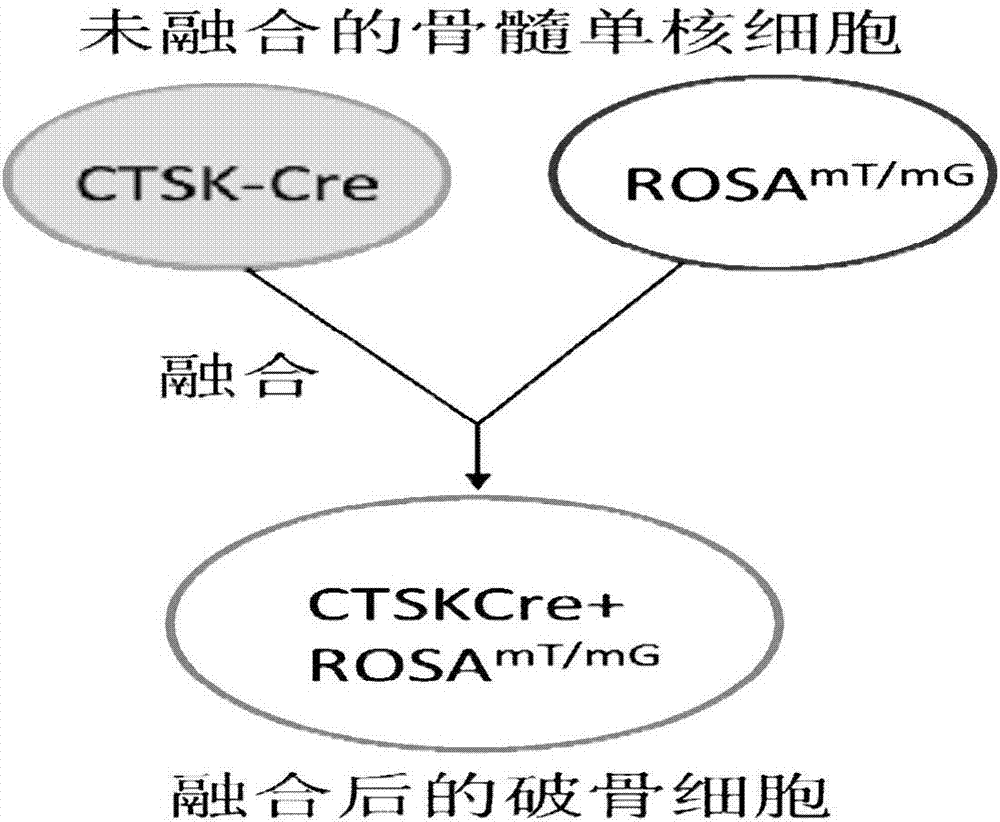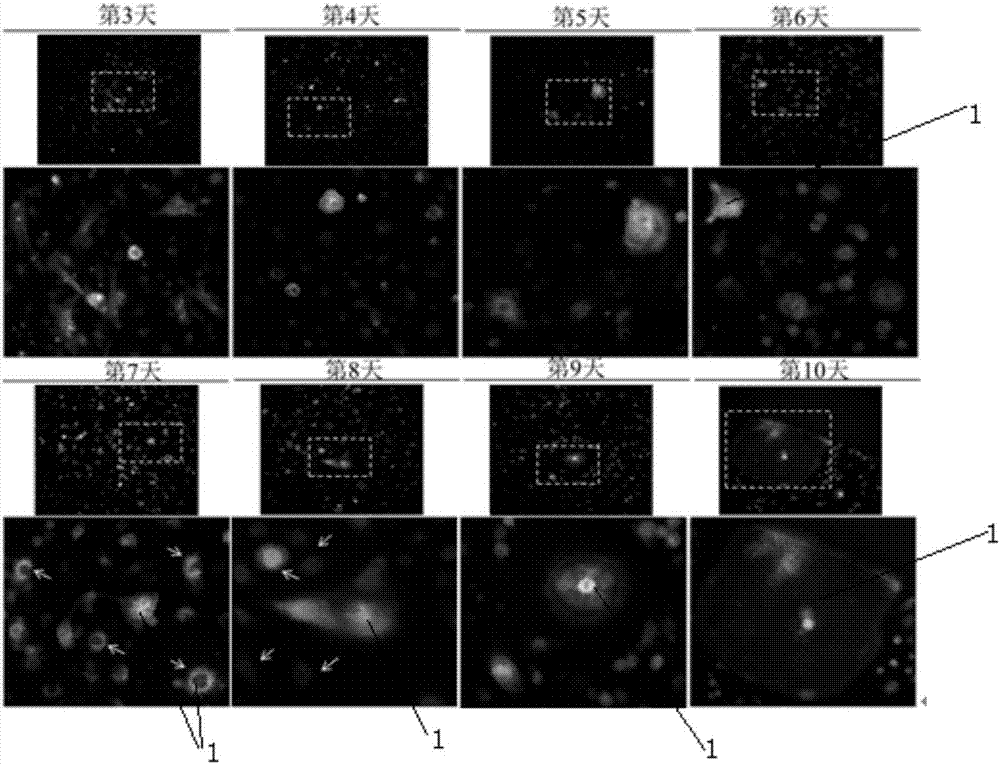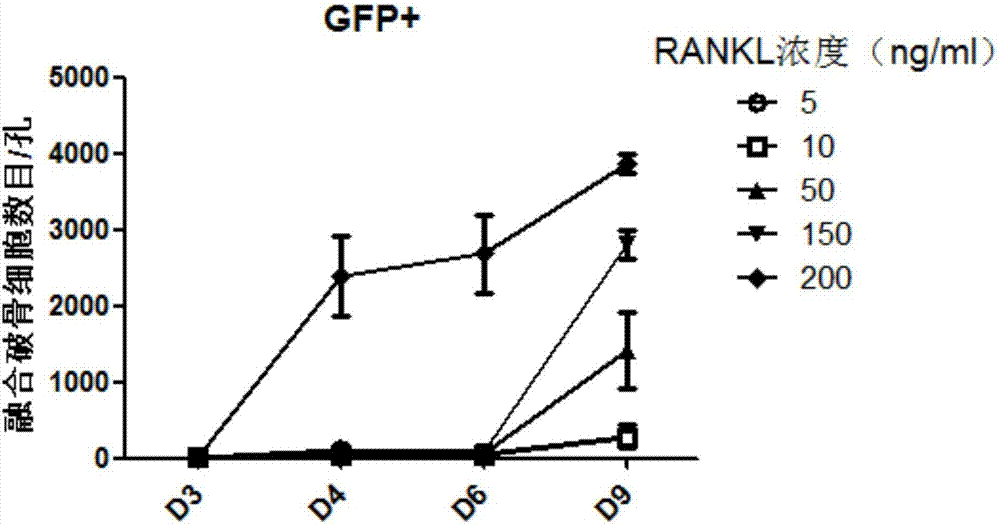Fluorescent protein marking method for researching fusion of osteoclast
A fluorescent protein, labeling method technology, applied in the medical field, to avoid the deviation of the results, the method is intuitive, and the accuracy and repeatability are high.
- Summary
- Abstract
- Description
- Claims
- Application Information
AI Technical Summary
Problems solved by technology
Method used
Image
Examples
Embodiment 1
[0037] Combine CTSK-Cre transgenic mice with Rosa mTmGBone marrow mononuclear cells from transgenic mice were isolated and mixed at a ratio of 1:1.
[0038] Mixed culture of CTSK-Cre transgenic mouse primary bone marrow mononuclear cells and Rosa mTmG The primary bone marrow mononuclear cells of transgenic mice were fused. Cre recombinase can specifically recognize the loxp DNA sequence, so that the gene sequence between the loxP sites is deleted or recombined, so as to achieve conditional gene targeting and finally produce green fluorescent protein.
[0039] The culture conditions are: DMEM medium (containing 10% FBS, 1% P / S), 37°C constant temperature incubator, 5% carbon dioxide, 95% oxygen.
[0040] In the culture conditions, the total amount of cells after mixing meets the following requirements: A. The total amount of cells in the 96-well plate is 3000-8000, and the volume of the medium is 100ul; The bottom area of the cell is proportionally converted to obtain the ...
Embodiment 2
[0047] Combine CTSK-Cre transgenic mice with Rosa mTmG Bone marrow mononuclear cells from transgenic mice were isolated and mixed at a ratio of 1:1.
[0048] The culture conditions are: DMEM medium (containing 10% FBS, 1% P / S), 37°C constant temperature incubator, 5% carbon dioxide, 95% oxygen.
[0049] In the culture conditions, the total amount of cells after mixing meets the following requirements: A. The total amount of cells in the 96-well plate is 3000-8000, and the volume of the medium is 100ul; The bottom area of the cell is proportionally converted to obtain the final mixed cell volume.
[0050] Add MSCF (final concentration: 50ng / ml) on the first day of mixed culture, and change the medium on the third day.
[0051] Divided into different RANKL concentration groups and different PTH concentration groups to study the effects of RANKL concentration and PTH concentration on the number and efficiency of osteoclast fusion. Add 50ng / ml MCSF to the culture medium, and ...
Embodiment 3
[0056] Other content is as embodiment 1, CTSK-Cre transgenic mouse and Rosa mTmG Bone marrow mononuclear cells from transgenic mice were isolated and mixed at a ratio of 3:1.
PUM
 Login to View More
Login to View More Abstract
Description
Claims
Application Information
 Login to View More
Login to View More - R&D
- Intellectual Property
- Life Sciences
- Materials
- Tech Scout
- Unparalleled Data Quality
- Higher Quality Content
- 60% Fewer Hallucinations
Browse by: Latest US Patents, China's latest patents, Technical Efficacy Thesaurus, Application Domain, Technology Topic, Popular Technical Reports.
© 2025 PatSnap. All rights reserved.Legal|Privacy policy|Modern Slavery Act Transparency Statement|Sitemap|About US| Contact US: help@patsnap.com



